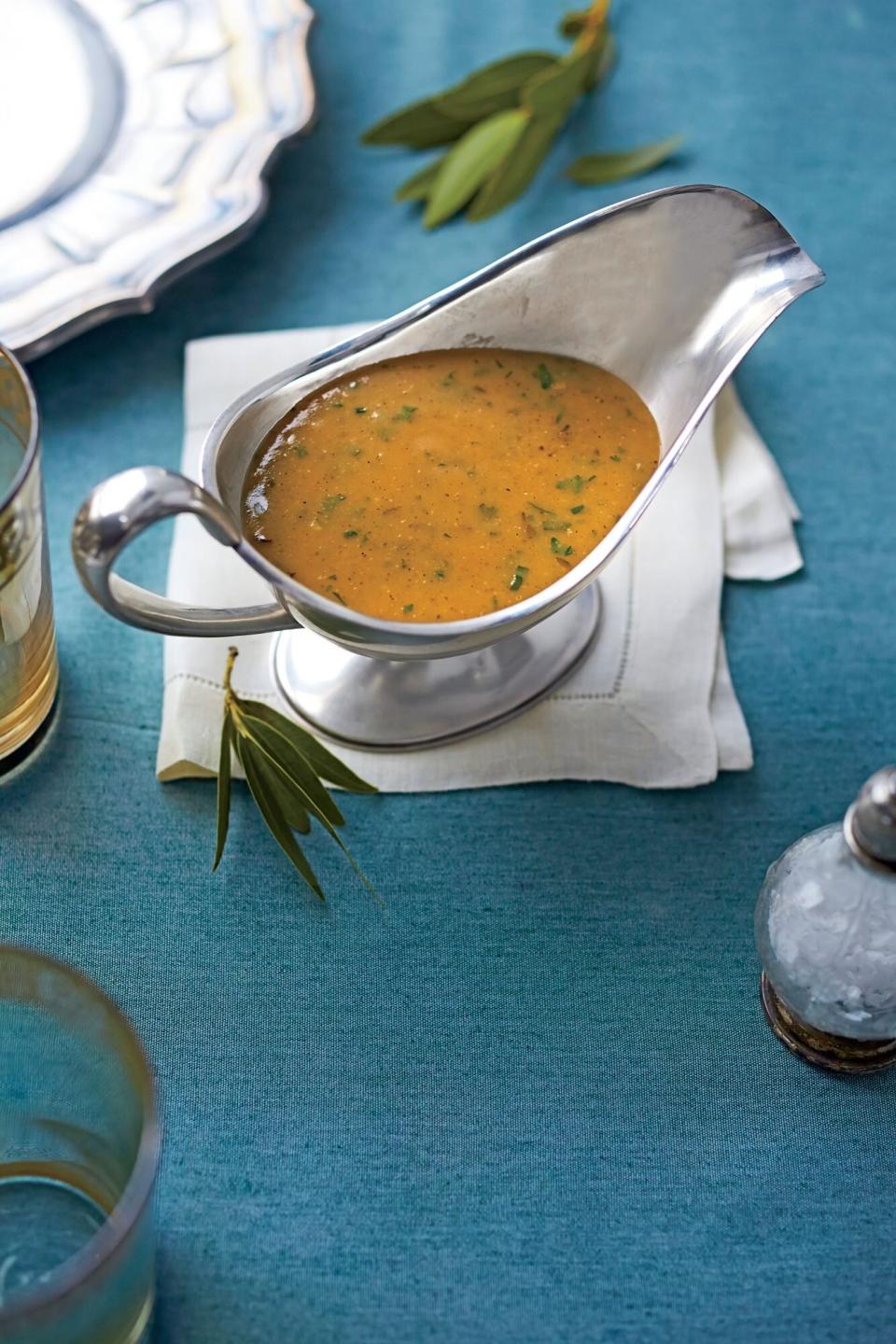Mistakes That Ruin Gravy (and How to Fix Them)
Every good hostess knows that you don't call guests to the dinner table until the vintage gravy boat–filled with silky gravy–is placed next to the turkey platter. If you shied away from making homemade gravy because you are afraid it may be too salty or too bland, read up on these six mistakes that can ruin gravy and how to avoid them.

Photo: Hector Sanchez
How to Avoid Lumpy Gravy
Lumps usually occur because you haven't properly incorporated your thickening agent into the fat when making a roux, one of the most essential elements to a good gravy.
A roux is used to thicken sauces, gravies, and gumbos. You can make it with the seasoned roasting pan drippings, butter, or oil. Heat your fat in a Dutch oven or skillet over medium heat, and whisk in an equal amount of flour. Continue whisking until mixture is smooth and thick, like a wet sand consistency. Once your roux is bubbling, add your stock and keep whisking until the mixture bubbles and thickens. Reduce heat to a simmer and cook for a few minutes until the gravy reaches the consistency you prefer. If after whisking you still have some lumps, pour the gravy through a fine mesh strainer to sift them out.
How to Avoid Gravy That is Too Thick
Gravy needs to cook a few minutes for all the ingredients to heat and thicken. Don't get impatient and add more flour when all you need is a little more time. If your gravy has cooked up too thick, you may have added too much thickener or too little liquid. When it's hot, gravy should be thick enough to coat the back of a spoon, but not so thick that it sticks to the spoon. If your gravy is hot and still too thick, add broth a little at a time to thin it out, and adjust the seasoning if needed.
How to Avoid Gravy That is Too Thin
A good gravy should coat your homemade mashed potatoes, not run down and pool at the bottom of your plate. If you began with a roux and your gravy is cooking up too thin, you can try cooking it longer and allowing the volume to reduce. You can also make a slurry, which is like a roux except you use liquid instead of fat. Whisk a couple tablespoons of flour into 1/2 cup of stock and then whisk that mixture into your gravy. As it heats, it will thicken. Be sure a taste the gravy to adjust the seasoning.
How to Avoid Gravy That is Too Salty
A gravy that's too salty can ruin everything it touches. As gravy cooks, it loses volume and the flavors are concentrated, often leading to an overly salty taste. To avoid gravy that tastes like a salt block, season it at the end of the cooking process, not the beginning. If you use pan drippings to make gravy, give it a taste before making your roux so you can gauge the salt factor. And always opt for low-sodium varieties when purchasing boxed broth or stock. If your gravy is finished and it is still too salty, add some broth or water to tone it down.
How to Avoid Gravy That is Bland
If your creamy gravy is beautiful to look at but just has no taste, the first thing you can do is add a touch more salt, which can bring out the natural flavors of the gravy. If that isn't enough to add taste to the gravy, add a few shakes of soy sauce or Worcestershire sauce, stir in a couple tablespoons of browned butter, or consider adding sauteed mushrooms and onions.

